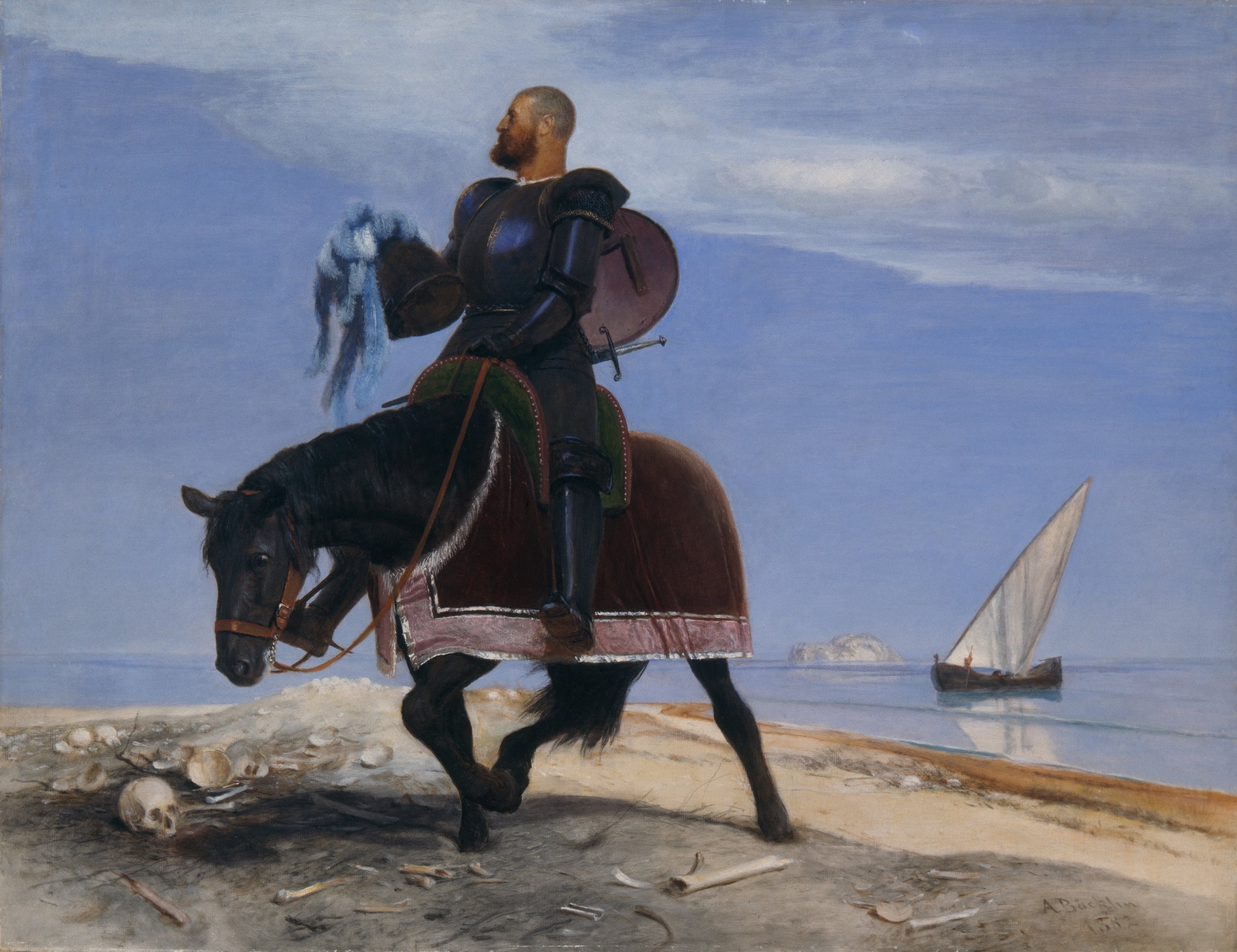With his bizarre pictorial dream worlds, Arnold Böcklin advanced in the 1860s to become the leading painter in the German-speaking realm. Like Anselm Feuerbach and Hans von Marées, he was one of the “Germans in Rome.” They shared a love of Italy and its landscapes shaped by Antiquity, which offered a counter reality to a world increasingly marked by industrialization. Böcklin’s Adventurer shows the knight Astolfo from Ariosto’s Orlando furioso (Mad Roland), who, according to legend, rode along the mouth of the Nile, searching for the giant Caligorant. A hermit warned him of the danger in which he was putting himself in, offering him a place on his boat, but Astolfo was not to be deterred, emerging victorious over the monster, taking it to Cairo. In Böcklin’s painting, the hermit on the boat has become an incidental figure. His head raised proudly, Astolfo looks ahead with determination. But the exhausted horse and the bones on the ground point to the hardships that will be encountered in this undertaking and the danger that lies ahead. It is no coincidence that Böcklin chose this story, which takes place in Africa, as a theme in 1882. This was the year the German Colonial Association was founded, marking the beginning of German- Prussian colonialism in Africa. The knight, burning for action, is actually a symbol of aggressive expansionism and a warning against a false belief in progress. The hermit stands for the peaceful antithesis: He rows his boat back to the lonely island seen in the distance.
en

